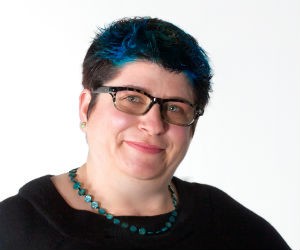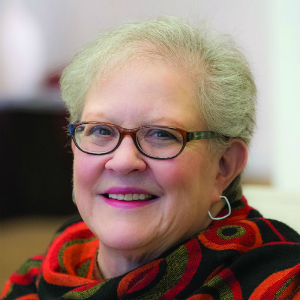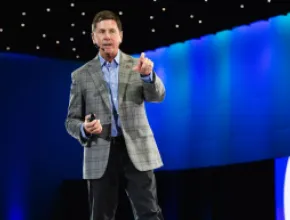“Sexual harassment” as a term was not coined until 1975, as documented by Lin Farley in this Op-Ed piece for The New York Times. It was years later that the U.S. Equal Opportunity Commission (EEOC) added guidelines on sexual harassment.
For those of you who live in other parts of the world, I encourage you to comment on this article with more information (and links) about the protections against sexual harassment and other workplace bullying. Our goal is to ensure greater protection and knowledge for all that are in and related to our industry.
In selecting those to interview, I turned to Sherry Marts and Jessica Pettitt, both of whom have written extensively on issues of equality, inclusion and harassment. Their views are their own based on research and experience. They may not reflect all my views or those of the publisher of this blog and newsletter.
My gratitude for their time and sharing of experiences. If we’ve accidentally edited responses in a way that changes the meaning, forgive us and add please to the comments to correct our errors. In some cases, their words have been emphasized either in bold or italics or both by this author to call attention to certain concepts.
Q1. Those interviewed:
Sherry A. Marts (SM), Ph.D., CEO of S*Marts Consulting LLC, is a former association CEO with a wide-ranging background in biomedical research, regulatory affairs, nonprofit management, public education and research advocacy. She provides expert consulting and training services to nonprofits and academic institutions on diversity and inclusion, harassment and bullying, and interpersonal communication. She also offers executive and career coaching with an emphasis on career and leadership development for women.
Dr. Marts is a skilled workshop leader, facilitator, writer and speaker with a lively personality and a keen sense of humor. Her interest in the issue of harassment and bullying lies at the intersection of her professional life as a woman in science, and her previous experience as a women’s self-defense instructor.
Her most recent publications include:
- Author of Open Secrets and Missing Stairs: Sexual and Gender-Based Harassment at Scientific Meetings.
- Co-author (with Elizabeth Engel of Spark Consulting) of the white paper Include is a Verb: Moving from Talk to Action on Diversity and Inclusion.
- Co-author (with Raven Dana) of The Book of How: Answers to Life’s Most Important Question.
Dr. Marts received her B.Sc. (Hons.) in Applied Biology from the University of Hertfordshire, and her Ph.D. in Physiology from Duke University.
You can connect with her at her website, www.smartsconsulting.com,
or via email at sherry@smartsconsulting.com.
Jessica Pettitt (JP), M.Ed., CSP™, pulls together her stand-up comedy years with 15-plus years of diversity trainings--about which she says on her website, “WARNING: Not your typical diversity trainer!”--in a wide range of organizations to serve groups to move from abstract fears to actionable habits that lead teams to want to work together. With a sense of belonging and understanding, colleagues take more risks with their ideation, converse precious resources through collaboration, and maintain real connections with clients over time.
You can read her full resume here, including the extensive list of publications, training and work she does. Jessica Pettitt can be contacted at jess@goodenoughnow.com, or text her about anything to 202.670.4262.
A personal note: I am grateful that Jess wrote Good Enough Now, about which you can read more about here and purchase copies of via the link provided on that page, if you so choose.
Q2. What is “sexual harassment?” What is non-sexual bullying or harassment? How are they alike and how do they differ? Why is it important to differentiate, especially since the current conversations are about sexual vs. general harassment?
SM: I hate the term “sexual harassment” and I don’t use it. I talk about gender-based harassment and bullying.
The term “sexual harassment” puts the focus on the content of the harassing behavior, rather than on the effects of that behavior. When you look at the effect of gender-based harassment on targets and bystanders you can clearly see that this is not about sex, sexuality or human intimacy--even when the harasser’s goal is some kind of sexual contact or activity. Harassment is all about power.
Whether we’re talking about gender-based harassment or harassment on the basis of any other personal characteristics (race, religion, age, ability, size, etc.), we’re talking about behavior that emerges from the difference in power between the harasser and the target. Harassment is all about who controls the space, and who is or is not safe in that space. Street harassment conveys the clear message that the target is not safe from unwelcome attention in public spaces simply because they are female, or transgender, or a person of color, or wearing a hijab, and so on. Workplace harassment conveys the message that the target is not safe and not welcome in that workplace, or in a particular role in that workplace.
Harassment is a form of bullying, one that focuses on a personal characteristic of the target. The bully’s message is “I can make your life hell and you can’t do anything about it.” The harasser’s message is “I can make your life hell and you can’t do anything about it. You don’t belong here, and I can get away with treating you this way because you are a ____.”
I have heard from many women whose initial harassment experiences fit the legal and HR definitions of sexual harassment, and whose harasser shifted tactics after the woman complained. The harasser then turned bully--belittling her in meetings, sending all-caps email rants that he cc’d to everyone in the department, excluding her from important meetings or conversations about her work, and so on. Her further complaints to HR were dismissed because this was no longer “sexual” harassment. That’s one of the problems with segregating harassment and bullying with sexual content from other forms of harassment and bullying.
JP: I didn’t know the words bullying or harassment until I had been on the speaking circuit for a decade or so and they were suddenly topic areas of speakers. Similarly, I didn’t know the word lesbian until graduate school. Interestingly, to me at least, I was personally impacted and/or targeted by bullies, harassers and homophobes, long before I had access to the language that described me and the experiences.
As a diversity and inclusion speaker, author and consultant, I have always gravitated to the incongruences of oppression and work daily to bring light to those silenced and marginalized, even if I don’t know the right words. Most recently, I have learned that airlines don’t have a policy to deal with unwanted and/or unsolicited touching while in flight. They claim no responsibility, have no response protocol, and no criminal action is taken to prevent the perpetrator from leaving the plane. I don’t know anything about this--and this is my newest area of mind-blowing WTF moments where I, too, don’t have the language.
I don’t know that I agree that it is important to separate out sexual vs. general harassment. This is about power and not a sexual fetish or conquest of sorts. The feeling of being entitled to someone else’s space, body or a specific response can be problematic, and that is if the other person feels this as a use of power over their sense of agency or in exchange for something that feels limiting. This is a subjective definition and why this area is tricky. Sometimes, the motivation can be solved through education and sometimes it can’t be.
I draw a parallel between “in group” and “out group” language to some degree. There are stories, words and actions that are permitted (rightly or wrongly) within sub groups or communities to which you belong that are not promised to be permitted in other settings. One must learn each setting and follow often unwritten rules about what is permitted, and over time, these rules may change. An individual can also write their own rules about what is and isn’t permitted, and these rules apply to their own behavior--not others necessarily. I should mention, I am not a lawyer, I was a ceramics major so take my legal advice with that in mind.
Lastly, it is never appropriate to say or do anything without someone’s consent and yet we do this all the time, and most of the time it even seems to work out okay. We are not entitled to feedback, education, training or a conversation with someone that we have offended or hurt. It is our responsibility to listen to those that do give us feedback and assume that we don’t know everything.
Imagine what would happen if we entered a conversation prepared to be wrong--this isn’t at all about overpowering the other, but actually listening and connecting with them if they want to.
Q3. Our readers are in hospitality--as meeting professionals (aka planners or designers of content and delivery), sales for AV companies, hotels, convention centers, cities, conference centers and related services, and others. A friend once said to me that at hospitality gatherings it “feels like Hollywood” with all the hugging and kissing. If that’s the culture,
- How is it contributing to potential harassment and the ability to say no to even a general greeting from a business contact that could involve a hug or kiss?
- How do we turn it around to change the culture of the industry? Do we need to and why? And are industry associations (MPI, PCMA, IAEE, ASAE, etc.) responsible to help do so?
SM: Whether or not this kind of social behavior contributes to harassment, it is behavior that needs to be reconsidered because it is troubling and can be exclusionary. There are myriad reasons why someone doesn’t want to be hugged or kissed. Maybe they have a cold and don’t want to spread it. Maybe they are on the autism spectrum and physical contact is excruciating for them. Maybe they have severe germ phobia. Maybe they come from a cultural background in which that kind of touch is restricted to family members and spouses.
Who knows how many members, attendees, employees, even business contacts have stayed away from events just to avoid the unpleasantness of putting up with, or trying to avoid, unwanted touch? [Author note: I’m reading the book The Empath’s Survival Guide: Life Strategies for Sensitive People and learning so much about myself and others. What Sherry says plays into lessons in this book as well.]
[On-site meetings] staff can help by modeling behavior that discourages this kind of contact without permission or consent. They can be the ones who ask first: “May I give you a hug?” which doesn’t take long and is a perfectly polite and reasonable question.
“Please don’t hug me without asking” is a perfectly polite and reasonable response to being forced into a hug. If this truly has become part of the culture, then work that as the association has become aware that this is a barrier to all members feeling safe at the meeting, everyone should ask before hugging--something like a gentler version of the DC Metro [mass transit] campaign, “If it is unwanted, it’s harassment.”
I know lots of people who proclaim, “But I’m a hugger, I hug everyone!” I really doubt that all of these folks are incapable of resisting the urge to wrap their arms around someone in public. Always, always, always ask before your grab and then wait for a positive response before you move in. Don’t assume that because this is someone you’ve hugged before, they are okay with being hugged again.
Consent is active, not passive, and past consent does not imply current consent.
And yes, I am fully aware of cultural differences in how people greet each other. Japanese bowing etiquette is a great example. It is amazing how much information (respect, dominance, deference, fondness) can be exchanged in the process of simply bowing from the waist, and physical contact is not required.
The custom in some cultures of cheek-kissing is one that comes up in discussions about “to hug or not to hug,” and I have a couple of thoughts on that. The first is that if cheek kissing is NOT part of your culture, it is perfectly okay to decline to participate. You may have to let the cheek-kisser know that on first encounter, but there is no reason why you have to conform to their custom if that custom makes you uncomfortable.
The second is that, having experienced cheek-kissing rituals when doing business in Europe, I found them somewhat less invasive than some U.S. customs. They are certainly less invasive and less prone to “accidental” unwanted touching of body parts than hugs; they are even less invasive than the U.S. “handshake-elbow grab-pull in for a pat on the back” maneuver.
JP: I just spoke at a conference that was VERY huggy. When I say huggy, I mean deep long-lost friend hugs that genuinely seemed honest and loving with nothing but a “welcome to the community” intention. I am not a touchy, huggy person, and when at conferences, I know that the hugs will happen so I brace myself and enjoy being part of the community norm. I still get VERY uncomfortable when someone hugs me or approaches me from behind, and the depth, length and tightness of the hugs at the conference I just returned home from was a new level of discomfort. I simultaneously felt welcomed and emotionally drained until the last day of the conference, I was literally out of juice in a way I can’t really describe.
I don’t have direct answers or solutions. I also don’t want a world or meeting culture where people, specifically men, are terrified to emotionally connect, show respectful affection, etc. I don’t know that it is the meeting industry’s role to mediate what is an intention of a touch and the impact of that touch--I would like to think that our cultural norms can set these standards. I also would like to see people more confident that they have more to offer than a sexual object or are valued by society by how attractive or sexually active one is. This is a larger issue about respecting one another and ourselves differently and without connection to another person.
We all have work to do.
It is also true that someone can learn and behave differently than they did in the past. This can be both a positive progressive movement as well as a decline in rational choices and personal decisions. To make it even more complicated, though always about power, sexual harassment and bullying can be considered comedy, entertainment and harmless, and the next second it has gone too far.
At another conference I spoke at recently, a comedian introduced me following the [immediate past] Secretary of Education’s speech. [The person introducing me] talked about how young and attractive the Secretary of Education was while he was serving himself breakfast in the back of the room post-speech. He turned red and the audience laughed. The introducer continued and suddenly, it was too much. She kept going and as she walked off the stage she stated her phone number and said, “Most marriages don’t last--call me.”
This turned abhorrent. As I took the stage, and began my keynote, I named what had happened by saying, “With all that is going on in the world, that is an excellent example of sexual harassment and what not to do.” [During the] conference, [participants], men and women, thanked me for naming it as sexual harassment. It took almost nothing on my part to name it, and collectively, we in the industry could do this, too.
Q4. Much of what’s in the news is about sexual harassment by men toward women, except for the cover story in Time naming the #MeToo movement as “persons of the year” where men were included, and in the case of some celebrities and the spouse of a politician in Massachusetts. Is this what’s prevalent vs. same-gender harassment? Toward LGBTQ people? Toward transgender people?
SP: “Wait, what about me?!? I’m oppressed, too, you know!!” The age-old cry of those in power (i.e. white, straight, cis-gender men) whenever the rest of us object to being treated as less than human.
The vast majority of incidents in professional settings are men harassing women, and most often older men harassing younger women, or men higher in rank or power harassing women lower in rank or power. Yes, men do harass men, although it often takes the form of bullying rather than “sexual” harassment. And there is a lot of intersectional harassment and bullying--targets are selected and bullied because of their gender or gender identity AND their race, religion, appearance, age, etc.
Hair-splitting over who is more harassed than whom, and exactly what kind of harassment they experience, is a distraction from the real problem. The real problem is the steady and unrelenting abuse of the power dynamics in organization.
The goal of all this is pretty simple. Behave like an adult. Treat people like the human beings that they are. Don’t be an asshole.
JP: All harassment is about power. The harassment of trans folks, specifically transwomen of color, is significantly more likely to result in death or life long injury and disability. The indecipherable “femininity” of a person perceived to be a man, therefore assumed to be gay, and a person of color is a deadly combination of assumptions almost always resulting in acts of violence that are often supported by local, state and federal laws. LGBQ people, as long as they are white, upper class and conform to binary standards, they are less likely to be harassed or bullied, and yet are consistently starting in elementary school. Similarly, to show up as one’s full self, they (we) must come out to every person we come in contact with and every day of our lives. This alone can compound and feel like an act of violence, then add on bias or hate incidents where folks are targeted by others. Again, it is all about power. It is important to mention that a woman of color started the #MeToo campaign and was left off of the Time cover as well as the narrative of the hashtag that was eventually picked up by a straight white cis actress--then it got attention.
Q5. What do we all need to know and watch for? How do we, for ourselves and for our friends, colleagues, co-workers and families, help those who may be afraid to speak out for fear of retribution, including fear of job loss? What are the bullet points people can use to fend off unwanted touch, or more?
SM: Targets, and many witnesses, recognize bullying and harassment for what it is. If nothing else, that little gut clench when you hear a comment or see a behavior, so easily dismissed or overridden, is a sure sign that yes, that was unwelcome, unwanted, inappropriate and downright wrong.
It takes a lot of forethought and practice to speak up. The most effective responses follow a simple formula:
“You just did/said ____.
“I don’t like it.” Or “That violates our code of conduct.” Or “I don’t want to hear things like that.”
“Stop doing/saying _____.”
Say it with a straight face, neutral body language, no apology, no smiles, no being “nice” about it. Use volume and tone of voice to reflect the intensity of your upset over what they did or said.
If you want to intervene and you aren’t the target, don’t speak for the target; make it about you: “I find that extremely offensive.” “I don’t want to hear things like that at work.” “That violates our code of conduct.” “We don’t do that here.”
Self-defense classes usually include practicing this kind of response, which is generally effective and does not escalate the encounter. I recommend that anyone and everyone take a good empowerment self-defense class. (In the D.C. area, Defend Yourself http://defendyourself.org/ and Collective Action for Safe Spaces http://www.collectiveactiondc.org/ offer classes on harassment resistance and empowerment self-defense.)
[Author’s note: check if these organizations or in your location and, in the comments please, add names of other resources in other cities and countries of which you are aware].
JP: I suggest that trying to help and support others to do something may be frustrating as it varies person to person what is the right thing to do. The best thing to do is to take responsibility for yourself. Who and how we show up is our responsibility. When do you want to take power from someone else? If you answer “never” then you have work to do.
Stand up to those taking power away from others, especially if it really doesn’t cost you anything or feel like a risk. When you think something isn’t a big deal--this means there isn’t much of a risk for you. Say something. Notice who and how you are regarding power with and over others. Notice your own touch patterns as well as language you shift using with one person or group but not another and ask yourself why. If your own behaviors and language choices stand up to your own questioning process you can keep them or change them. Either way, if they survive your questioning processes, you can justify or explain them to others.
Q6. What have I not asked that you want to tell readers about sexual or other workplace and meeting harassment?
SM: Whether you’re the target or a bystander, effectively responding to harassment in the moment is a learned skill and takes practice. The more people learn and apply these skills, the faster we’ll see changes in behavior. That said, responding on an individual level does entail risks, from social sanctions (“Don’t talk to her, she’ll ream you out for harassment.”) to job loss and career derailment.
Harassment resistance and intervention by individuals is a start, but bigger changes are needed to eliminate this behavior in professional settings. Leaders in organizations, professions and workplaces have to make this a priority, and have to be willing to take rapid and effective action to eliminate harassers and bullies from every professional setting.
Until organizations and employers are willing to shoulder the risk of actually enforcing policies against harassment and bullying, cultures won’t change. As long as HR offices and Title IX offices are told their jobs are risk reduction and liability avoidance, complaints will continue to be investigated unto death and then dismissed as “unproven,” and this behavior will continue.
Until targets are listened to, believed, EFFECTIVELY protected from retaliation, and rewarded for their courage in coming forward, organizations will continue to lose talented, creative and productive people. As long as harassment and bullying are tolerated and even rewarded, harassers will harass and bullies will bully.
JP: Just know that harassment isn’t like the chicken pox. If you hear of someone’s experience(s), believe them and know that there are more experiences in their past and more to come in their future. This doesn’t happen just once and you are done. This is a lifelong experience. I think this has been the most shocking part for those new to this conversation.
I am a 43-year-old woman and I don’t know another woman that doesn’t experience sexualized violence, harassment and/or bullying throughout their lives. Let that sink in. It doesn’t have to be a problem for you to be a problem for others. Now, let’s do something about it.
Click here to view additional content in the 01.05.18 Friday With Joan newsletter.







